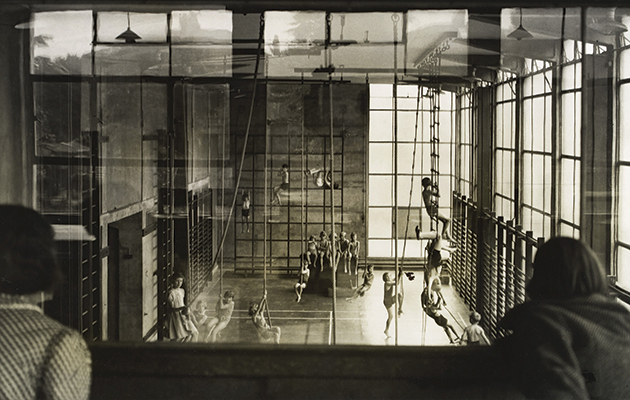|
|
||
|
Owen Williams’s modernist Peckham health centre closed in 1950, but its emphasis on self-reliance and wholesome pursuits still appeals to a diverse audience of politicians, anarchists and healers, says Debika Ray Depending on your political stance, the Peckham Experiment – which ran intermittently between 1926 and 1950 – could be seen as an exercise in radical democracy or an endorsement of conservative ideals about self-reliance. Its instigators, doctors Innes Hope Pearse and George Scott Williamson, believed medical practice was overly focused on curing disease, rather than on cultivating good health and preventing illness. They insisted that individuals, if told what’s good for them and given the means to act on that information, would take responsibility for their own health. The social experiment they devised to test these ideas took place for the most part in the purpose-built, privately funded Pioneer Health Centre in Peckham. In exchange for a small fee and an annual health check, local families had access to a plethora of facilities – gym, cafe, nursery, games room, library and swimming pool. The aim was not the diagnosis of illness, but the promotion of a wholesome, community-oriented lifestyle, with medical consultancy seamlessly integrated. The doctors offered members information about health, child development, antenatal care and sex education, but left them to make decisions about their subsequent actions. Left to their own devices, they organised workshops, sporting clubs, parties and concerts. Central to the experiment was the Pioneer Centre itself, which Walter Gropius hailed in 1935 as Britain’s best new building. Designed by engineer Owen Williams, it rejected the cellular, corridor-dominated format of conventional medical centres in favour of large spans of uninterrupted space. There were few internal walls, except ones made of glass, which created a sense of transparency. Light and air flooded through large windows, and cork floors meant people could walk barefoot. Equipment was specially designed for a self-service culture – stackable chairs and utensils resistant to chipping. Such casual surroundings were intended to encourage members (more than 1,000 families at its peak) to be uninhibited. This was, after all, a laboratory for the study of humans – all activities took place under the beady eyes of the doctors (another reason for the glass walls), who concluded that ‘health’ was something that needed to be nurtured. The arrival of the National Health Service in 1948 proved to be the centre’s undoing. Its insistence on fees and on individual and institutional autonomy, as well as its exclusion of single people and those living outside a one-mile radius, clashed with the top-down, inclusive ethos of the NHS. It failed to secure continued funding, so closed in 1950, and the Pioneer Centre was eventually turned into flats. The experiment’s lessons are open to interpretation. Anarchist movements seized upon its findings as support for a bottom-up social structure, but it could equally be claimed by those who believe in the primacy of the family or those, like Pearse, suspicious of welfare. More recently, ‘wellness’ – the ‘holistic’ integration of diet, exercise, psychology and preventative medicine – has become a lucrative, elitist industry. But the idea that human wellbeing relies on more than meeting basic physical needs cuts across political divides, and is particularly urgent as we attempt to manage the effects of poor diets, sedentary occupations, ageing populations and overwork. And, with governments in Europe and elsewhere seeking to cut health budgets, such ideas may finally become mainstream. This article first appeared in Icon 160
|
Words Debika Ray
Image: Pioneer Health Foundation / Wellcome Images |
|


















